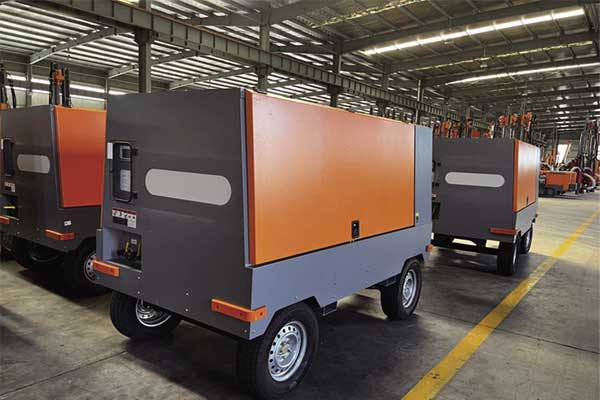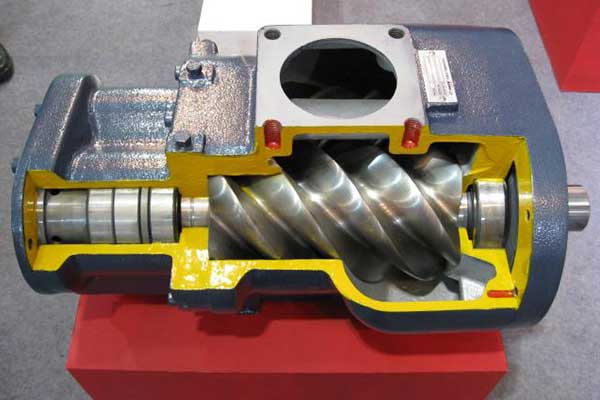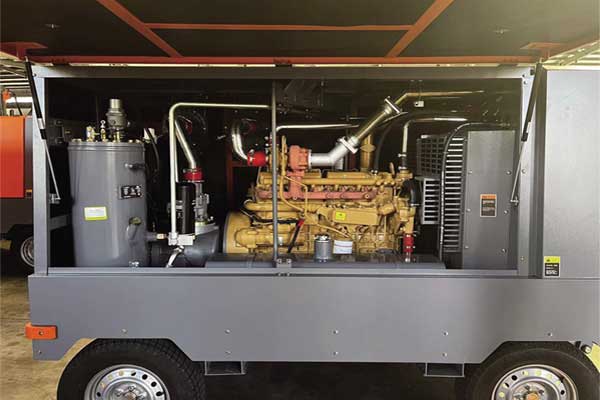What is a Rotary Screw Air Compressor?
In the world of industrial machinery, efficiency and reliability are paramount. When it comes to generating compressed air for various applications, rotary screw air compressors stand out as one of the most popular choices. But what exactly is a rotary screw air compressor, and how does it work? In this article, we delve into the intricacies of rotary screw air compressors, exploring their functionality, advantages, and applications.

What is a Rotary Screw Air Compressor?
A rotary screw air compressor is a type of positive displacement compressor that works by trapping air between two meshed rotors and compressing it as the rotors rotate. Unlike piston compressors, which use reciprocating motion, rotary screw compressors employ continuous rotary motion to deliver a steady supply of compressed air.
How Does a Rotary Screw Air Compressor Work?

At the heart of a rotary screw air compressor are two helical rotors, typically housed within a casing. As the rotors rotate in opposite directions, the air is drawn into the compressor and progressively compressed as it moves along the rotors’ length. This compression process results in an increase in air pressure, ultimately delivering high-pressure air suitable for various tasks.
Key Components of a Rotary Screw Air Compressor:
- Rotors: The heart of the rotary screw compressor, these helical rotors are typically made of high-strength materials such as steel or aluminum.
- Housing: Also known as the casing or enclosure, the housing contains the rotors and compression chambers, ensuring proper alignment and sealing.
- Air Inlet: This component allows ambient air to enter the compressor and begin the compression process.
- Discharge Port: The outlet through which compressed air exits the compressor and is delivered to downstream equipment or systems.
- Cooling System: Rotary screw compressors generate heat during operation, so an effective cooling system is essential to maintain optimal performance and prevent overheating.

Advantages of Rotary Screw Air Compressors:
- High Efficiency: Rotary screw compressors offer high efficiency levels, delivering more compressed air per unit of energy compared to other types of compressors.
- Continuous Operation: Thanks to their rotary motion design, screw compressors can operate continuously without the pulsations or vibrations associated with piston compressors.
- Low Maintenance Requirements: Rotary screw compressors have fewer moving parts than piston compressors, resulting in reduced maintenance and downtime.
- Quiet Operation: With their smooth, rotary motion, screw compressors operate relatively quietly, making them suitable for noise-sensitive environments.
- Versatility: Rotary screw compressors are available in a wide range of sizes and configurations, making them suitable for various industrial applications, from small workshops to large manufacturing plants.
Applications of Rotary Screw Air Compressors:
The versatility of rotary screw air compressors makes them indispensable across various industries. From powering pneumatic tools and machinery to providing compressed air for HVAC systems and industrial processes, these compressors find application in:
- Manufacturing plants
- Construction sites
- Automotive workshops
- Pharmaceutical facilities
- Food and beverage production
- Aerospace and aviation industries
- Energy and utilities sector
Conclusion:
Rotary screw air compressors are integral components of various industrial processes, offering efficiency, reliability, and versatility. Understanding how these compressors work and their advantages can help businesses make informed decisions when selecting compressed air solutions for their operations. Whether in manufacturing, construction, healthcare, or energy exploration, rotary screw compressors continue to play a vital role in driving productivity and innovation across industries.

